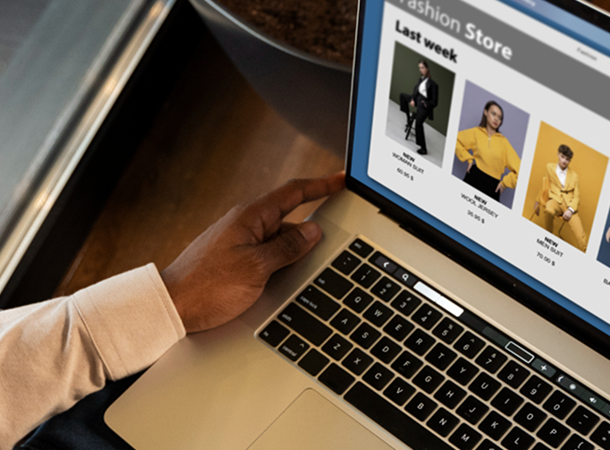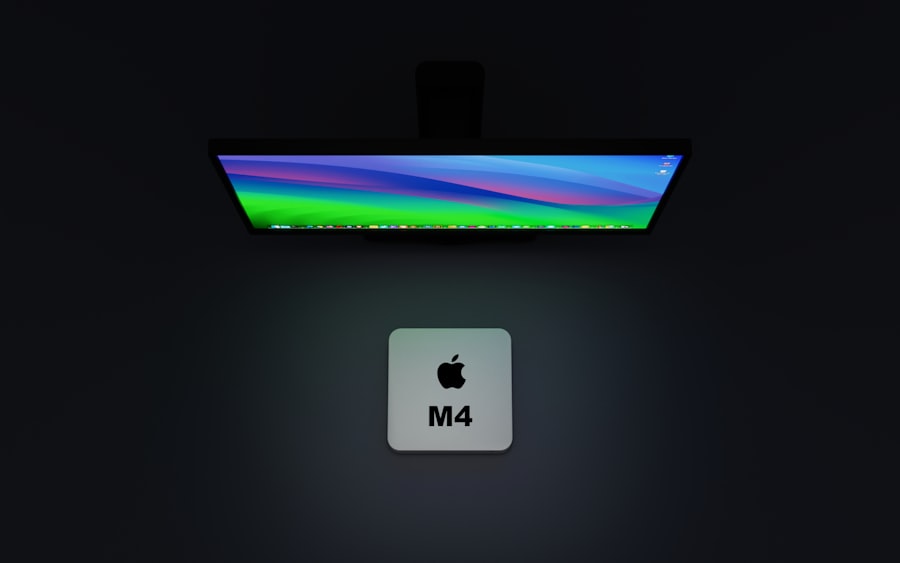
Close
As organizations increasingly embrace remote work, the interview process has evolved to accommodate this shift. Preparing for a remote interview requires a strategic approach that encompasses not only the logistics of technology but also the nuances of virtual communication. First and foremost, it is essential to establish a clear understanding of the role being filled.
This involves not only reviewing the job description but also aligning it with the organization’s current needs and future goals. Engaging with team members who will be involved in the hiring process can provide valuable insights into the skills and attributes that are most critical for success in the position. This collaborative effort ensures that everyone is on the same page and that the interview process is tailored to attract candidates who are not only qualified but also a good fit for the team.
In addition to defining the role, it is crucial to prepare the interviewers themselves. This includes training them on best practices for conducting remote interviews, which can differ significantly from in-person interactions. Interviewers should be encouraged to create a welcoming atmosphere, even through a screen, by using positive body language and maintaining eye contact.
Practicing active listening is also vital; it allows interviewers to engage more meaningfully with candidates and fosters a sense of connection despite physical distance. Furthermore, establishing a structured set of questions that align with the competencies required for the role can help maintain focus during the interview and ensure that all relevant topics are covered. By investing time in preparation, organizations can enhance the effectiveness of their remote interview process and create a more positive experience for both candidates and interviewers.
The technological landscape has transformed how interviews are conducted, making it imperative for organizations to leverage the right tools effectively. Video conferencing platforms such as Zoom, Microsoft Teams, and Google Meet have become staples in the remote interview process, offering features that facilitate seamless communication. However, simply choosing a platform is not enough; organizations must ensure that both interviewers and candidates are comfortable using the technology.
This may involve providing candidates with clear instructions on how to access the platform, as well as conducting test runs to troubleshoot any potential issues beforehand. By prioritizing technological proficiency, organizations can minimize disruptions during interviews and create a more professional atmosphere. Moreover, technology can enhance the interview experience beyond just video calls.
Utilizing collaborative tools such as shared documents or virtual whiteboards can allow interviewers to take notes in real-time and share feedback instantly. Additionally, recording interviews (with candidates’ consent) can provide valuable resources for later review, ensuring that no critical insights are overlooked. Organizations can also explore using assessment tools that evaluate candidates’ skills through simulations or coding challenges, depending on the nature of the role.
By integrating these technological solutions into the remote interview process, companies can not only streamline their operations but also enrich their evaluation methods, leading to more informed hiring decisions.

A structured interview process is essential for ensuring consistency and fairness in candidate evaluations, particularly in a remote setting where nuances can easily be lost. This involves developing a standardized set of questions that are directly tied to the competencies required for the role. By asking each candidate the same questions, interviewers can more effectively compare responses and assess qualifications objectively.
Additionally, incorporating behavioral-based questions can provide deeper insights into how candidates have handled situations in the past, which is often indicative of future performance. This structured approach not only aids in decision-making but also enhances the overall candidate experience by providing clarity and transparency throughout the process. In tandem with standardized questions, it is beneficial to establish a scoring rubric that allows interviewers to evaluate responses systematically.
This rubric should outline key criteria for each question and assign numerical values based on how well candidates meet those criteria. By quantifying evaluations, organizations can reduce bias and ensure that decisions are based on merit rather than subjective impressions. Furthermore, involving multiple interviewers in the process can provide diverse perspectives and mitigate individual biases.
Regular debriefing sessions after interviews can facilitate discussions about candidate performance and help align evaluations among team members. Ultimately, a structured interview process not only enhances fairness but also contributes to better hiring outcomes by ensuring that all candidates are assessed against the same standards.
Clear communication is paramount in any interview process, but it takes on added significance in a remote setting where candidates may feel disconnected or uncertain about what to expect. Organizations should proactively communicate all relevant details regarding the interview format, including the duration, platform being used, and any materials or preparations required from candidates. Providing this information well in advance allows candidates to prepare adequately and alleviates any anxiety they may have about navigating unfamiliar technology or processes.
Additionally, outlining what will be covered during the interview helps set expectations and allows candidates to tailor their responses accordingly. Moreover, organizations should emphasize their commitment to creating an inclusive environment during remote interviews. This includes encouraging candidates to ask questions about the process or raise any concerns they may have regarding accessibility or technology use.
By fostering an open dialogue, organizations can demonstrate their dedication to ensuring that all candidates feel valued and respected throughout the interview process. Furthermore, sharing information about company culture and values can help candidates understand what is expected of them beyond technical skills. This holistic approach to communication not only enhances candidate experience but also reinforces the organization’s brand as an employer of choice.
In many roles, particularly those in technology or specialized fields, assessing candidates’ technical skills is a critical component of the interview process. Remote interviews present unique challenges in this regard; however, there are several effective strategies that organizations can employ to evaluate these skills accurately. One common approach is to incorporate practical assessments or coding challenges into the interview process.
These tasks allow candidates to demonstrate their abilities in real-time while providing interviewers with tangible evidence of their technical proficiency. By designing assessments that closely mirror actual job tasks, organizations can gain valuable insights into how candidates will perform in their roles. Additionally, leveraging online assessment platforms can streamline this evaluation process further.
These platforms often offer a range of customizable tests that assess various technical skills relevant to specific roles. By utilizing such tools, organizations can efficiently evaluate multiple candidates simultaneously while ensuring consistency in assessment criteria. Furthermore, incorporating peer interviews or technical panels into the process allows for collaborative evaluation among team members who possess relevant expertise.
This multi-faceted approach not only enhances the accuracy of technical skill assessments but also fosters a sense of teamwork among existing employees as they engage in the hiring process.

While technical skills are undoubtedly important, assessing cultural fit and soft skills is equally crucial in determining whether a candidate will thrive within an organization. In a remote interview setting, evaluating these attributes requires thoughtful consideration and strategic questioning.
Behavioral-based questions that explore how candidates have navigated interpersonal challenges or collaborated with teams in previous roles can provide valuable insights into their soft skills. For instance, asking about a time when they had to resolve a conflict with a colleague can reveal their communication style and problem-solving abilities—both essential traits for success in any workplace.
Organizations should consider incorporating situational judgment tests or role-playing scenarios into their interviews to further assess cultural fit and soft skills. These exercises allow candidates to demonstrate how they would handle specific situations relevant to the organization’s culture and values. For example, presenting a hypothetical scenario involving team dynamics can help gauge how well candidates align with the organization’s collaborative ethos.
Additionally, encouraging open dialogue during interviews allows candidates to express their values and motivations candidly, providing further context for their fit within the company culture. By prioritizing cultural fit alongside technical skills, organizations can build cohesive teams that contribute positively to overall workplace dynamics.
The conclusion of an interview process often marks just as important a phase as its beginning: providing feedback and follow-up communication with candidates. Regardless of whether a candidate is selected for the position or not, timely feedback is essential for maintaining a positive candidate experience and upholding an organization’s reputation as an employer of choice. Constructive feedback should be specific and actionable; it should highlight both strengths and areas for improvement based on observations made during the interview process.
This not only helps candidates grow professionally but also demonstrates that their time and effort were valued by the organization. In addition to feedback, follow-up communication serves as an opportunity for organizations to reinforce their brand image positively. Sending personalized thank-you emails or messages expressing appreciation for candidates’ participation can leave a lasting impression, even if they were not selected for the role.
Furthermore, organizations should consider inviting strong candidates who may not have been chosen for this particular position to apply for future openings or keep them in mind for other roles within the company. This proactive approach fosters goodwill and encourages ongoing engagement with potential talent pools. Ultimately, providing thoughtful feedback and maintaining open lines of communication after remote interviews not only enhances candidate experience but also strengthens an organization’s talent acquisition strategy over time.
When considering the implementation of remote interviews for staff augmentation, it’s also beneficial to understand the broader advantages of IT staff augmentation itself. A related article that explores this in depth is “Benefits of IT Staff Augmentation for Scaling Development Teams.” This piece provides valuable insights into how staff augmentation can be a strategic approach to scaling your development teams efficiently, which complements the process of conducting remote interviews. You can read more about it here. This article is a great resource for anyone looking to enhance their understanding of how staff augmentation can fit into their overall business strategy and support growth.
Staff augmentation is a business strategy where a company hires additional staff to fill skill gaps or meet increased demand. This can be done through hiring temporary or contract workers to work alongside existing employees.
Remote interviews for staff augmentation are interviews conducted with potential candidates for temporary or contract positions, but done virtually rather than in person. This is often done to accommodate candidates who are not local to the company or to streamline the hiring process.
Conducting remote interviews for staff augmentation allows for a wider pool of candidates to be considered, as geographical location is less of a barrier. It also saves time and resources for both the hiring company and the candidates, as there is no need for travel.
Some best practices for conducting effective remote interviews for staff augmentation include ensuring a stable internet connection, using video conferencing tools, preparing interview questions in advance, and providing clear instructions to candidates on the remote interview process.
Common challenges of conducting remote interviews for staff augmentation include technical difficulties with video conferencing tools, potential distractions in the candidate’s environment, and difficulties in assessing non-verbal cues. It’s important to address these challenges to ensure a smooth interview process.
Augmented Team Pvt Ltd

